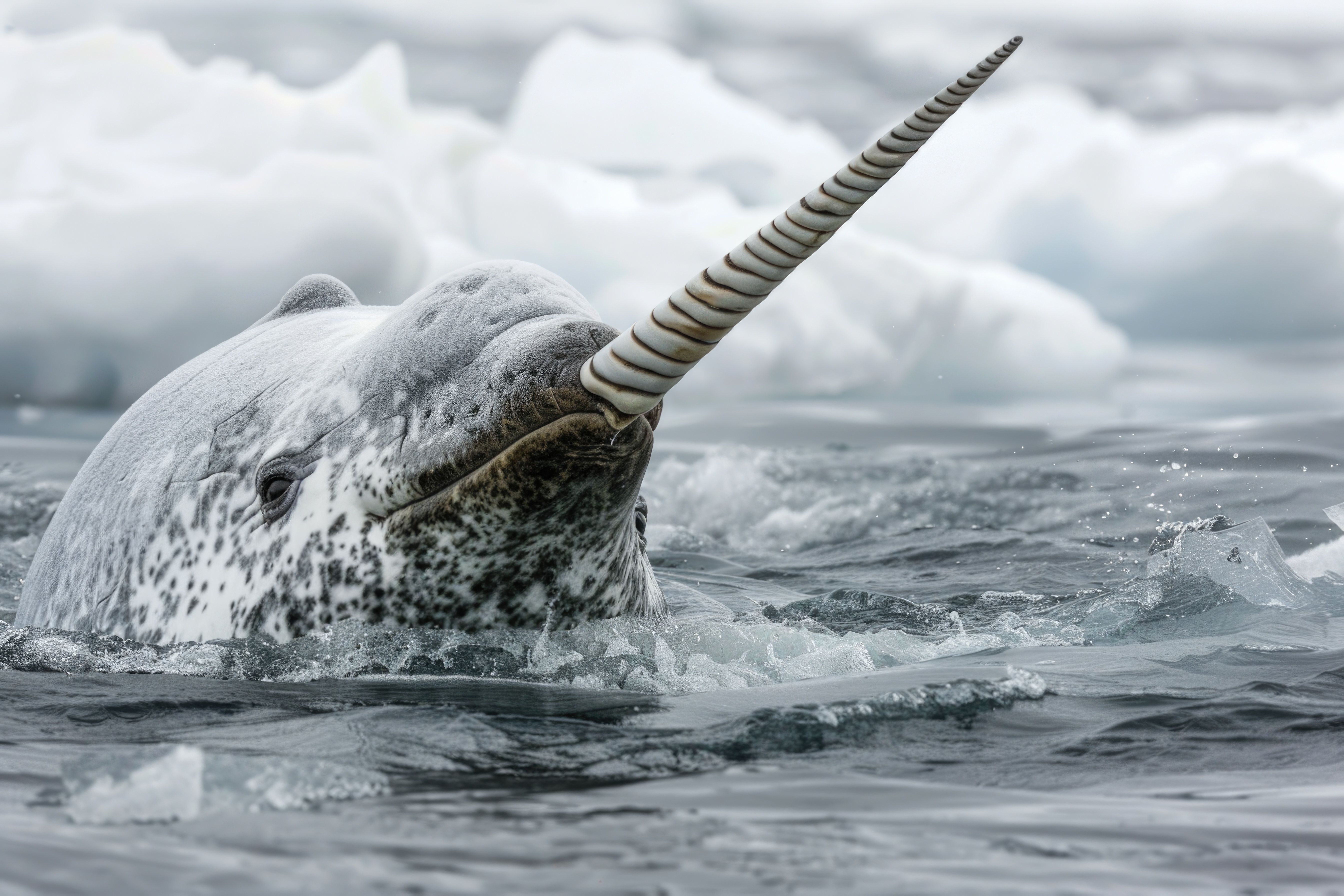The narwhal is a fascinating marine mammal known for its long, spiral tusk, which is actually an elongated tooth that can grow up to 3 metres (10 feet) in length. The narwhal may not be mythical like the unicorn, but it is just as elusive, being incredibly difficult to locate in the wild. But for those who know where to find narwhals, the horn will break the surface of the water and the magical creature will reveal itself, if only briefly, to catch some air before diving below the ice where a majority of the narwhals' lives are spent.

Amazing Facts About the Narwhal
Narwhals are often referred to as the ‘unicorns of the sea’ due to their striking appearance. These elusive creatures are well-adapted to life in cold, icy waters, using their tusks for a variety of purposes, including social interactions and hunting.

What is a narwhal?
The narwhal is a marine mammal native to the Arctic, known for its long, spiral tusk, which is actually an elongated tooth that can grow up to 3 metres (10 feet) in length.
Why do narwhals have such long tusks?
Narwhals’ tusks are believed to play a role in social interactions, with males using them in displays of dominance and to establish social hierarchies. They may also be used for hunting and navigating through icy waters.
Where can narwhals be found?
Narwhals live in the Arctic, primarily found in the waters of Canada, Greenland, Norway, and Russia. They inhabit cold, icy waters and migrate seasonally.
What do narwhals eat?
Narwhals are carnivorous, feeding on fish, squid, and shrimp. They are skilled divers and often hunt at depths of over 1,500 metres (4,920 feet).
How long do narwhals live?
Narwhals typically live to be 40 to 50 years old, though some individuals have been known to live longer.
How do narwhals use their tusks?
The tusks of narwhals are thought to be used for social interactions, such as sparring between males, and possibly for sensory purposes, as they contain nerve endings that may help detect changes in their environment.
Are narwhals endangered?
Narwhals are not currently classified as endangered, but their populations are threatened by climate change, loss of sea ice, and human activities such as shipping and oil exploration.
Do narwhals migrate?
Yes, narwhals are migratory. They travel between their summer feeding grounds in the high Arctic and wintering areas with more stable ice conditions.
How big are narwhals?
Narwhals can grow to around 4–5 metres (13–16 feet) in length, with males typically being larger than females. Their tusk can make up to 1/3 of their body length.
Can narwhals be seen in aquariums?
Narwhals are wild animals that are rarely kept in captivity due to their specialized habitat requirements and migratory nature. They are best appreciated in their natural Arctic environment.